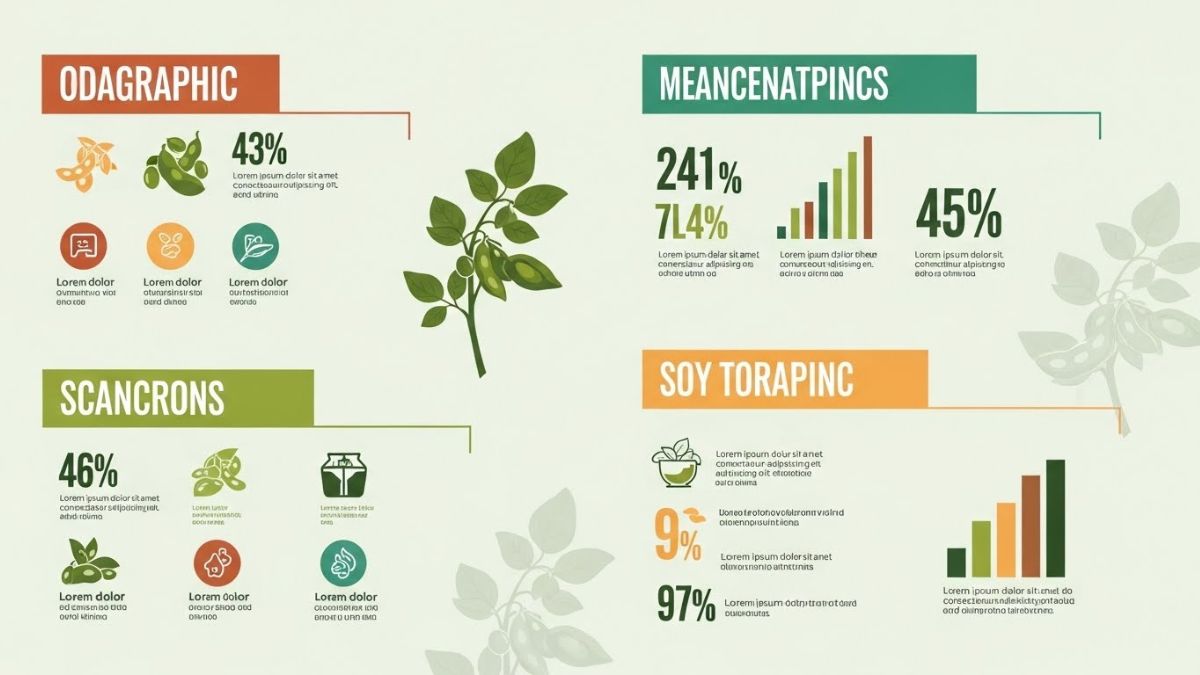HEALTH
How To Make Medical Imaging Appointment Online?

Need to schedule an X-ray, MRI, CT scan, or other medical imaging test? Making appointments online is quick, easy, and convenient compared to calling your doctor’s office. This guide will walk you through the process of booking medical imaging appointments to clinics like PRP Imaging through online patient portals step-by-step. Read on to learn the benefits, what to have ready, how to find available times, complete registration, and more tips for a smooth medical imaging appointment online experience.
The Benefits of Online Appointment Scheduling
There are many advantages to self-scheduling medical imaging appointments online:
- More appointment times – Online portals show a wider range of availability than what office staff may provide over the phone.
- 24/7 access – You can book appointments anytime, day or night, at your convenience.
- Avoid phone tag – Skip playing phone tag and leaving voicemails for staff. Schedule when it suits you.
- Faster booking – Entering your information online is quicker than relaying it verbally.
- Reminders – Many portals let you opt into text/email reminders about upcoming appointments.
- Paperwork – Some even allow you to complete registration forms electronically.
As long as your provider offers an online patient portal, scheduling imaging tests digitally is the way to go.
What to Have Ready Before Booking Your Appointment?
Before logging into the portal to schedule your appointment, be sure to have the following on hand:
- Referral details – Note the type of scan you need and body part to be imaged. This information is needed to book properly.
- Insurance cards – Have your insurance card(s) available to reference policy and member numbers.
- Calendar/schedule – Review your schedule to identify days/times that work for your imaging appointment.
- Payment method – In case there is a copay or deposit required to reserve the appointment time.
- List of questions – Jot down any questions you have to ask the care team when you arrive for the scan.
Having these details ready will make the online booking process smooth and quick.
How to Find Available Appointment Times?
Once logged into your patient portal, here are the typical steps for locating available times to schedule your medical imaging test:
- Select “Appointments” or “Schedule an Appointment.”
- Choose the facility or doctor’s office location where you want your imaging test performed.
- Select the test you were referred for (MRI, CT, etc).
- Enter the earliest date you’re available for the appointment.
- You’ll then see a calendar view or list populated with upcoming times.
If you have a specific timeframe that works best, use the portal filters to narrow down morning or afternoon appointments on certain days of the week.
Selecting and Confirming Your Appointment Time
After identifying available times that work for your schedule, follow these next steps:
- Select your preferred appointment date and time. This will prompt registration questions to provide details.
- Enter insurance information and any necessary medical history as prompted.
- Accept the appointment terms and conditions if required.
- Enter payment details if there is a copay or pre-pay amount due for reserving the appointment time.
- Confirm your email address and choose if you want a reminder sent.
- Finally, submit your appointment request.
You should receive a confirmation message verifying your imaging test appointment details. Most portals let you cancel or reschedule online as needed.
Tips for an Effective Appointment Experience
To get the most out of your medical imaging visit, keep these tips in mind
- Arrive early – Being on time ensures your scan starts promptly.
- Follow preparation instructions – For example, not eating before an abdominal MRI.
- Bring relevant records – Share past imaging results to help with comparison.
- Ask questions – Clarify next steps once your results are ready.
- Voice concerns – Speak up about any worries like claustrophobia.
- Confirm billing – If unsure if insurance is fully covering the test, ask to avoid surprises.
Booking your imaging tests online is fast and simple. Following this guide will help you schedule with ease and have an efficient appointment experience. Let me know if you have any other medical appointment questions.
HEALTH
The Health Benefits of Owning a bk horse: More than Just a Hobby

There’s something magical about the bond between humans and horses. For many, owning a bk horse transcends mere hobby; it becomes a profound passion that enriches every facet of life. From their majestic grace to their gentle souls, these animals offer more than just companionship—they provide an incredible array of health benefits that might surprise you. Whether you’re galloping through open fields or enjoying quiet moments in the stable, your relationship with your horse can significantly impact your well-being. Let’s dive into how owning a bk horse can enhance your physical health, mental clarity, social connections, and even financial stability.
Physical Health Benefits of Owning a Horse
Owning a bk horse is an excellent way to boost physical health. Caring for these majestic animals requires regular movement, which translates into daily exercise for you. Grooming, feeding, and training all demand physical activity that can help improve cardiovascular fitness.
Riding offers even more benefits. It engages various muscle groups, enhancing core strength and balance. As you ride, your body learns to work in harmony with the horse’s movements. This can lead to better posture over time.
Additionally, spending time outdoors with your horse promotes vitamin D absorption from sunlight. Fresh air contributes to overall well-being while reducing stress levels associated with sedentary lifestyles.
Connecting with nature also encourages active participation in life rather than passive observation—an invigorating shift that enhances both endurance and vitality as part of owning a bk horse.
Mental and Emotional Benefits of Owning a Horse
Owning a bk horse can transform your mental and emotional landscape. The bond formed with these majestic creatures fosters a sense of belonging and connection that is hard to replicate elsewhere.
Spending time with a horse encourages mindfulness, helping you stay present in the moment. Each interaction becomes an opportunity for reflection and peace amid life’s chaos.
The rhythmic nature of grooming, riding, or simply being near your horse offers therapeutic benefits. It reduces stress levels significantly by promoting relaxation and calmness.
Moreover, caring for a bk horse boosts self-esteem. Achieving milestones—whether training progress or show wins—instills confidence that’s often carried into other areas of life.
Additionally, horses are incredibly intuitive beings. They can sense human emotions; this unique ability creates an exceptional support system during tough times.
Social Benefits of Owning a Horse
Owning a bk horse connects you with a vibrant community of fellow equestrians. This shared passion creates bonds that go beyond just enjoying the ride.
You’ll find yourself participating in local events, competitions, and riding clubs. These gatherings foster friendships and provide opportunities for networking.
Horse ownership also encourages teamwork. Whether it’s working together to care for horses or collaborating on training routines, you’ll develop strong relationships built on trust and mutual support.
Moreover, being part of this community introduces you to diverse backgrounds and experiences. Each interaction enriches your understanding of life with horses.
Social media platforms dedicate spaces for sharing tips, stories, and achievements related to horse ownership. Engaging online expands your circle even further while keeping you connected with enthusiasts worldwide.
The joy of discussing riding techniques or sharing grooming hacks only adds to the sense of belonging within this unique social fabric.
Financial Benefits of Owning a Horse
Owning a bk horse can be seen as an investment. While the initial costs may seem daunting, the long-term financial benefits often outweigh them. Horses have a unique way of appreciating in value, especially if they are well-trained and registered.
Many owners participate in local competitions or events. This not only enhances your skills but also opens avenues for prize money and sponsorships. The more you engage with the equestrian community, the more opportunities arise to earn from your passion.
Additionally, owning a horse provides potential tax deductions related to care, training expenses, and even boarding fees when considered part of a business venture.
And let’s not forget about shared experiences; co-owning or leasing arrangements can distribute costs while allowing multiple individuals to enjoy this rewarding lifestyle without breaking the bank. Investing in a bk horse is not just about riding; it’s a gateway to numerous financial prospects within the equine world.
Maintaining Your Horse’s Health and Well-being
Caring for a bk horse involves more than just feeding and grooming. Regular veterinary check-ups are essential to monitor your horse’s health. Vaccinations, dental care, and deworming should be on your schedule.
Nutrition plays a crucial role in maintaining vitality. High-quality hay and grains tailored to their needs help keep them fit and energetic. Always ensure fresh water is available.
Exercise is non-negotiable. Whether through riding or free play, physical activity keeps muscles strong and joints flexible. Consider ground work as part of their routine too.
Mental stimulation shouldn’t be overlooked. Horses thrive on variety; try different trails or obstacle courses to keep things interesting for both of you.
Social interaction matters greatly. Ensure that your bk horse has companionship—whether from other horses or even humans—to promote emotional well-being and reduce stress levels.
Conclusion
Owning a bk horse goes beyond just a pastime. It’s an enriching experience that weaves together physical, mental, and social benefits into the fabric of your life. Those who embrace this passion find themselves enjoying improved fitness levels, enhanced emotional well-being, and deeper connections with others in their community.
The financial aspects shouldn’t be overlooked either; while investing in a horse can initially seem daunting, it can lead to valuable returns through competitions or breeding opportunities.
Moreover, taking care of a horse encourages responsibility and diligence. This commitment fosters not just the health of your animal but also contributes positively to your own lifestyle choices.
HEALTH
Understanding erectn: The Key to Enhancing Your Intimacy

Erectn, a term that often sparks curiosity and conversation, plays a crucial role in intimate relationships. Understanding this natural physiological response can open doors to deeper connections and heightened pleasure for couples. In a world filled with distractions and stressors, many may find themselves grappling with issues surrounding erectn. But worry not—this journey into the realm of intimacy will empower you with knowledge and practical tips to enhance your experience.
Whether you’re facing challenges or simply looking to improve your sexual health, being informed is the first step. Let’s explore what erectn truly means, how it impacts relationships, and discover valuable ways to foster better experiences together. Your path toward improved intimacy starts here!
What is Erection and Why is it Important?
Erectn refers to the process where the penis becomes firm and enlarged, typically due to sexual arousal. This natural response is primarily driven by increased blood flow, resulting in heightened sensitivity and pleasure during intimate moments.
Understanding erectn goes beyond its physiological aspects; it plays a pivotal role in intimacy. A healthy erection can enhance emotional connections, fostering trust and vulnerability between partners.
Moreover, it serves as an indicator of overall health. Issues with erectn may signal underlying medical conditions or stressors that require attention. Recognizing this connection is essential for maintaining not just physical wellness but also relationship satisfaction.
For many couples, strong erections translate into confidence and fulfillment in their intimate lives. This makes understanding the mechanics behind them all the more important as you navigate your personal journey toward enhanced intimacy.
Common Causes of Erectile Dysfunction
Erectile dysfunction can stem from various sources, both physical and psychological. One common cause is poor blood circulation. Conditions like diabetes or heart disease often lead to decreased blood flow, which affects erection quality.
Stress and anxiety play significant roles too. When the mind races with worries, achieving intimacy becomes challenging.
Hormonal imbalances also contribute. Low testosterone levels can diminish libido and hinder erections.
Certain medications may have side effects that impact erectile function as well. If you’re on medication, it’s worth discussing this with your doctor.
Lifestyle choices matter greatly. Smoking and excessive alcohol use can damage blood vessels over time, leading to difficulties in maintaining an erection.
Understanding these causes empowers individuals to seek appropriate solutions for enhancing their sexual health.
Lifestyle Changes to Improve Erection Quality
Making simple lifestyle changes can significantly enhance erection quality. Regular exercise is crucial. It boosts circulation and increases testosterone levels, both of which are essential for healthy erections.
Consider reducing stress as well. High-stress levels often lead to anxiety, which can impede sexual performance. Techniques like meditation or yoga can help you find balance and improve your overall mental health.
Sleep plays a vital role too. Insufficient sleep negatively impacts hormone production and libido. Aim for 7-9 hours of restorative sleep each night.
Avoid smoking and limit alcohol consumption as they can impair blood flow and decrease sensitivity. Instead, prioritize hydration; drinking enough water supports optimal bodily functions.
Maintaining a healthy weight contributes to better erection quality. Excess body fat often leads to hormonal imbalances that affect sexual performance. Adopting these habits will pave the way for improved intimacy in your life.
Dietary Recommendations for Better Erections
A balanced diet can play a crucial role in enhancing erection quality. Incorporating foods rich in antioxidants and vitamins is essential for overall health.
Fruits like berries, watermelon, and bananas are great choices. They promote blood circulation, which is vital for stronger erections.
Leafy greens such as spinach and kale also help by improving blood flow due to their high nitrate content. These vegetables enhance nitric oxide levels in the body.
Don’t overlook protein sources either. Lean meats, fish, and legumes provide necessary nutrients that support hormone production.
Healthy fats found in nuts and avocados contribute to heart health too. A healthy heart means better circulation.
Hydration shouldn’t be neglected either; drinking plenty of water aids bodily functions including sexual performance.
Natural Remedies for Erectile Dysfunction
When exploring natural remedies for erectile dysfunction, several options stand out. One popular choice is ginseng, known for its potential to boost libido and improve circulation.
Another effective remedy is L-arginine, an amino acid that helps increase blood flow by relaxing blood vessels. You can find it in foods like nuts and seeds or take it as a supplement.
Yohimbine, derived from the bark of an African tree, may also enhance sexual performance. It’s believed to work by increasing adrenaline levels in the body.
Additionally, incorporating regular exercise into your routine can significantly improve erection quality. Physical activity boosts testosterone levels and enhances overall health.
Managing stress through mindfulness practices or yoga might help alleviate anxiety linked to intimacy issues. These approaches create a supportive environment for both emotional and physical well-being.
Communication and Intimacy Tips for Couples
Open dialogue is essential for enhancing intimacy. Share your thoughts and feelings openly with each other. This builds trust, creating a safe space where both partners feel valued.
Active listening plays a crucial role too. Focus on what your partner is saying without interrupting or planning your response while they speak. This shows you care about their perspective.
Physical touch can deepen emotional connection beyond words. Simple gestures like holding hands, hugging, or cuddling can enhance feelings of closeness.
Explore new experiences together to keep the spark alive. Try activities that challenge you both—like dancing or cooking new recipes—which encourage teamwork and collaboration.
Don’t shy away from vulnerability either; expressing fears or desires can strengthen bonds significantly. It’s okay to discuss what works for you in intimate moments, fostering understanding and comfort between partners.
Conclusion:
Erection plays a crucial role in intimacy and overall well-being. Understanding its significance can lead to healthier relationships and improved sexual satisfaction. It’s essential to recognize that erectile dysfunction is common and can stem from various factors, including psychological stress, medical conditions, or lifestyle choices.
By making positive lifestyle changes, such as exercising regularly and managing stress effectively, individuals can enhance their erection quality. A diet rich in fruits, vegetables, whole grains, and lean proteins also supports better blood flow and hormonal balance.
Exploring natural remedies may provide additional support for those facing challenges with erectile dysfunction. Ingredients like ginseng or L-arginine have shown promise for some individuals seeking alternatives to traditional medications.
HEALTH
Health Benefits of insoya: Nutritional Insights You Need to Know

In a world where health trends seem to change overnight, one ingredient has quietly been making waves: insoya. This versatile soy product is not just another health fad; it’s packed with nutrients and offers a plethora of benefits that you might not be aware of. Whether you’re looking to boost your protein intake or simply want to explore new flavors in your meals, learning about the advantages of incorporating insoya into your diet can open up exciting culinary possibilities. Let’s dive deeper into what makes this star ingredient shine!
What is Insoya?
Insoya is a nutritious soy-based product made primarily from soybean curd. It’s known for its rich protein content and versatility in various dishes. Often used as a meat substitute, it caters to vegetarians and vegans alike.
This ingredient can be found in different forms, including tofu, tempeh, or soy milk. Each form offers unique textures and flavors that enhance meals while providing essential nutrients.
One of the standout features of insoya is its ability to absorb flavors from other ingredients. This quality makes it an excellent addition to stir-fries, soups, or salads. The possibilities are endless when you get creative with this healthful staple!
Beyond just being a culinary delight, insoya also serves as an important source of plant-based protein for those seeking healthier dietary options without sacrificing taste.
History and Origin of Insoya
Insoya, a nutritious plant-based protein source, has roots that trace back to ancient civilizations. Its origins are often linked to East Asia, where it was cultivated for its versatile beans.
Traditionally known as soybeans, these legumes have been embraced in various cultures for centuries. They were first domesticated in China around 1100 BC and later spread throughout Asia and beyond.
As trade routes expanded over the years, so did the popularity of soy products. Insoya became synonymous with healthful eating during the rise of vegetarianism in Western countries.
Today, it’s celebrated not just for its versatility but also for its ability to support sustainable farming practices. The continued interest in plant-based diets has solidified Insoya’s place on plates worldwide.
Nutritional Benefits of Insoya
Insoya is a powerhouse of nutrition, making it a smart choice for health-conscious individuals. It’s rich in protein, offering essential amino acids that are vital for muscle repair and growth.
Packed with dietary fiber, Insoya promotes digestive health. It aids in maintaining regular bowel movements and can help prevent constipation. This makes it an excellent addition to your daily meals.
Low in saturated fats, Insoya supports heart health by managing cholesterol levels effectively. Its omega-3 fatty acids contribute to overall cardiovascular wellness.
Additionally, this superfood contains important vitamins and minerals like calcium and iron. These nutrients play crucial roles in bone strength and oxygen transport throughout the body.
With its versatile profile, incorporating Insoya into your diet means boosting nutritional intake without compromising on taste or variety.
Health Benefits of Insoya
Insoya is a powerhouse of nutrients that can significantly enhance your health. Rich in protein, it provides an excellent alternative for those seeking plant-based sources. This makes it a popular choice among vegetarians and vegans.
The fiber content in insoya aids digestion and promotes gut health. It helps maintain regular bowel movements, reducing the risk of constipation.
Packed with essential vitamins and minerals, including iron and calcium, this superfood supports bone strength and overall vitality.
Additionally, the antioxidants found in insoya combat oxidative stress, which may help lower inflammation levels in the body.
Regular consumption may also assist in regulating cholesterol levels. This contributes to better heart health over time while supporting weight management efforts due to its satiating nature.
How to Incorporate Insoya into Your Diet
Incorporating Insoya into your diet can be both enjoyable and versatile. Start by adding it to smoothies for a protein boost. Its mild flavor complements fruits well, enhancing nutritional value without overpowering the taste.
Experiment with soups and stews by mixing in cooked Insoya for added texture and nutrients. It thickens dishes while enriching them with fiber.
For breakfast, try blending it into oatmeal or yogurt. You’ll gain extra protein and a satisfying creaminess that keeps you full longer.
If you enjoy salads, sprinkle some roasted Insoya on top for an unexpected crunch. This not only elevates your dish but also adds depth to each bite.
Don’t overlook snacks; use Insoya as a base for energy bars or trail mixes. The possibilities are endless when you get creative with this nutritious ingredient!
Potential Side Effects and Precautions
While Insoya boasts numerous health benefits, it’s important to be aware of potential side effects. Some people may experience digestive discomfort, such as bloating or gas, especially if they are not accustomed to high-fiber foods.
Allergies can also occur in sensitive individuals. If you have a soy allergy or intolerance, it’s crucial to avoid Insoya entirely. Always read product labels carefully for hidden ingredients.
Additionally, excessive consumption might lead to hormonal imbalances due to phytoestrogens present in soy products. Moderation is key when incorporating it into your meals.
Pregnant and breastfeeding women should consult healthcare providers before adding Insoya to their diets. It’s always better to err on the side of caution with any new food source. Listening to your body and adjusting intake accordingly will help ensure a positive experience with this nutritious option.
Conclusion:
Insoya is a remarkable ingredient that offers an array of nutritional benefits. Its rich history and diverse origins highlight its importance in various cuisines around the world. The health advantages, from improved digestion to enhanced heart health, showcase why incorporating this versatile food into your diet can be beneficial.
As you explore ways to include insoya in your meals, remember to start gradually if you’re new to it. Consider adding it to soups, salads, or smoothies for a nutritious boost. While generally safe for most people, it’s essential to remain mindful of potential side effects and consult with a healthcare professional if needed.
Embracing the goodness of insoya may lead you towards healthier eating habits and contribute positively to your overall well-being. Take advantage of this superfood by experimenting with recipes that excite your palate while nourishing your body at the same time!
-

 GENERAL2 years ago
GENERAL2 years agoDiscovering the Artistic Brilliance of Derpixon: A Deep Dive into their Animation and Illustration
-

 Posts2 years ago
Posts2 years agoSiegel, Cooper & Co.
-

 HEALTH2 years ago
HEALTH2 years agoTransformative Health Solutions: Unveiling the Breakthroughs of 10x Health
-

 Lifestyle2 years ago
Lifestyle2 years agoPurenudism.com: Unveiling the Beauty of Naturist Lifestyle
-

 FASHION2 years ago
FASHION2 years agoThe Many Faces of “λιβαισ”: A Comprehensive Guide to its Symbolism in Different Cultures
-

 Lifestyle2 years ago
Lifestyle2 years agoBaddieHub: Unleashing Confidence and Style in the Ultimate Gathering Spot for the Baddie Lifestyle
-

 Entertainment2 years ago
Entertainment2 years agoGeekzilla Podcast: Navigating the World of Pop Culture, Gaming, and Tech
-

 Lifestyle1 year ago
Lifestyle1 year agoSandra orlow: Unraveling the Story of an Iconic Figure
